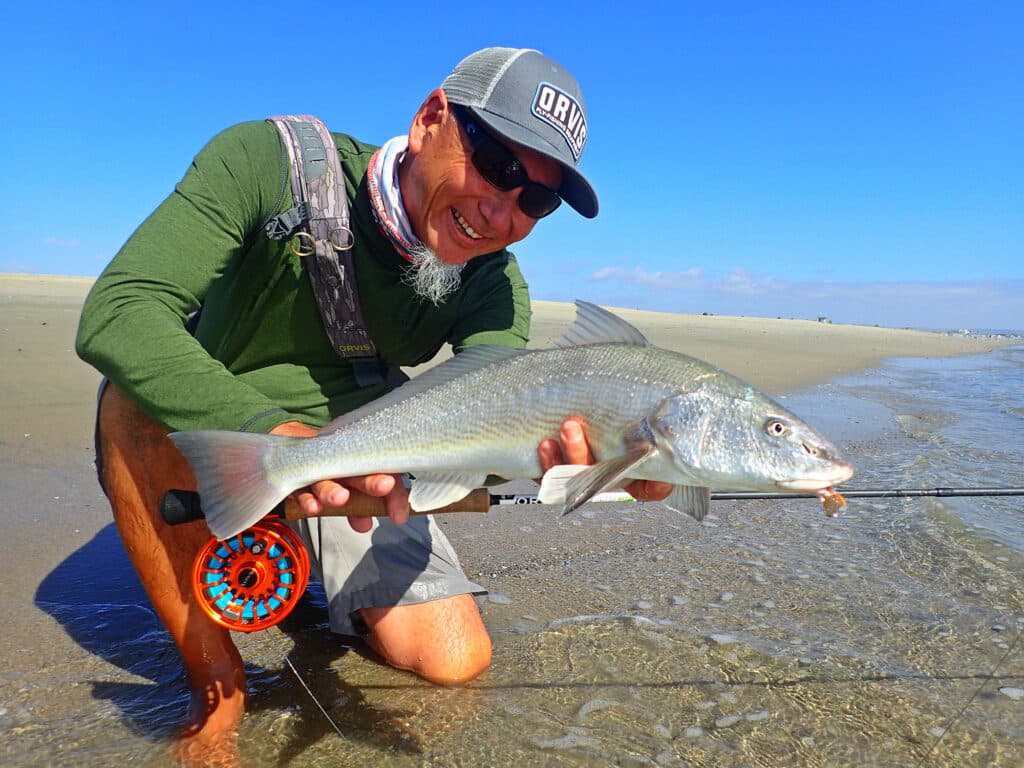
Have you tried California sight fishing in the surf? Are you up for a challenge? Trek the beaches anywhere south of Santa Barbara in the summer months to experience barefoot action for a croaker species as moody as a permit and strong as a redfish.
“Corbinas are every bit as difficult to target as bonefish or permit,” says California fly-fishing guide Glenn Ueda, who specializes in sight fishing this lesser-known species. “I like to call them the ‘ghost of the coast’ because most beach-goers don’t really know these fish are here. Plus, you might only get 5 to 10 legit shots in a morning of fishing, and they’re not always hungry.”
Make the most out of your trip by targeting the flattest beaches —stay away from rocky shorelines. “Set up with your feet dry on the sand, casting into 6 inches to a foot of water,” Ueda says. “Look out 50 feet into the water, nothing more, as any fish you see farther out aren’t willing to eat a fly yet.”

Corbinas ride the waves into the extreme shallows, looking for sand crabs to eat. They look like a mix of bonefish and oversized Florida whiting, with silver sides and a downturned mouth. Ueda says his average catch is 18 to 22 inches. He holds the 4-pound, tippet-class world record with a 5-pound, 8-ounce fish.
Ueda fishes in the mornings when the beaches aren’t crowded. An incoming tide during the full or new moon periods is an optimal window to target this species. “Look for structure like cross currents, channels, ditches, rips or troughs on the beach,” Ueda explains. “Corbinas use the deeper pathways to get onto the beach from the surf in search of mole crabs.”
Glenn Ueda’s Setup:
- Rod: 9-foot, 6-weight Orvis Helios
- Reel: Galvan Grip 6
- Line: Scientific Anglers SONAR Stillwater Seamless Density Sink 5/Sink 7
- Leader: 9-foot tapered fluorocarbon
- Fly: Surfin’ Merkin (tied with gray, mint green or pink EP Fibers)
- Stripping basket
- Sunglasses: Rose lenses in low-light haze; Copper lenses in bright sunlight








